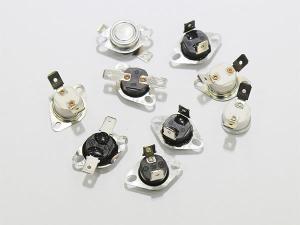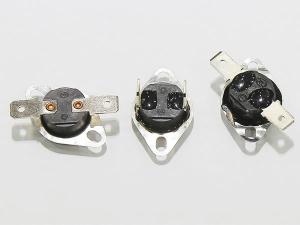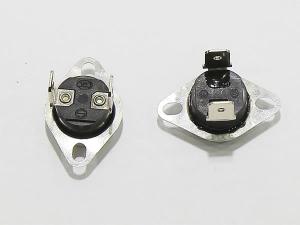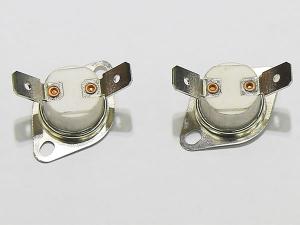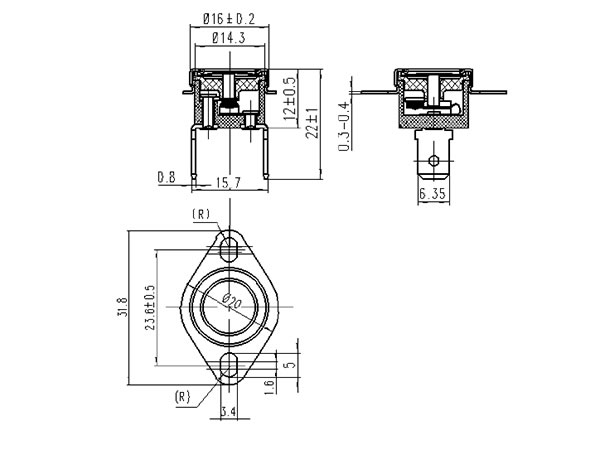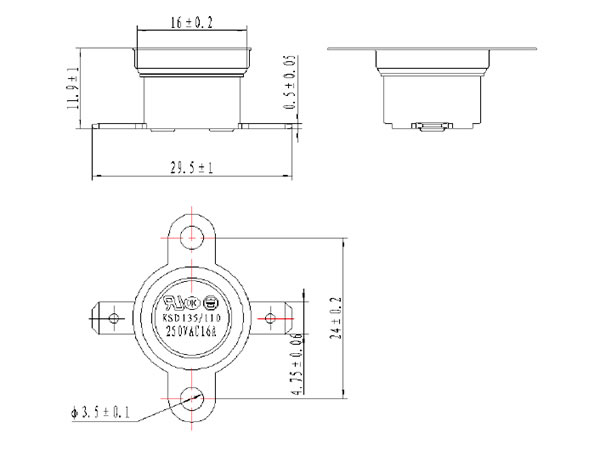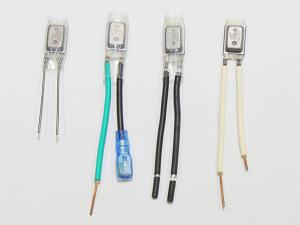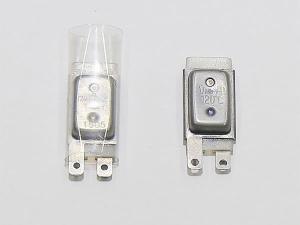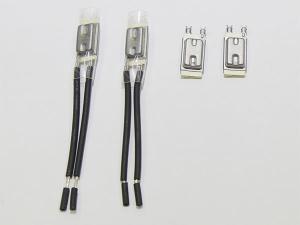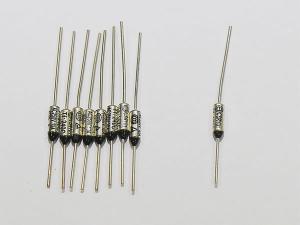- Home
- Products
- Disc Thermostat
- Disc Thermostat, KSD Series
Disc Thermostat, KSD Series
Snap Action Thermostat, Snap Disc Thermostat, Bimetallic Disc Thermostats, Bimetal Thermostats, Bimetal Disc Thermostat, Snap Switch
KSD series disc thermostat is mainly applied in occasions where the circuit should be automatically switched on or off as the temperature changes, keeping the temperature of the electric devices varying within a certain range.
According to customers’ requirements, we can choose different insulation materials for the bimetal thermostat, like phenolic resin, PPS, and ceramic. With fixed working temperature, reliable operation, and long service life, disc thermostat has found large popularity in electric appliances like boiler, water heater, vacuum cleaner, duplicator, electric stove, oven, dryer, refrigerator, dishwasher, and air conditioner, etc.
Working Principle
The mechanism of KSD series snap action thermostat is based on a snap-action bimetal disc, which opens or closes the electric contacts when the predetermined temperature is met.
When the electric device works normally, the switch is closed. Once the temperature reaches the limit point, the bimetal disc works immediately to open the contacts and thus switching off the circuit. After the device has cooled down to the allowable temperature, the snap disc thermostat will reset automatically.
Protector drawings:
| State of contacts under room temperature | normally open or closed |
| Reset style | automatically or manually |
| Structure of contacts | single-pole single-throw (SPST) |
| Rated capacity of contacts | 120V AC 15A (100 thousand times of service); 250V AC 10A (100 thousand times of service) |
| Housing material | phenolic resin, PPS, and ceramic (optional according to clients’ request and the opening temperature) |
| Opening temperature range | 40-220 ℃ (for temperature over 180 ℃, the housing should be made from ceramic) |
| Lead | 6.35*0.8, 4.8*0.5, 4.8*0.8 |
| Lead angle | 180°, 90°, 45° |
| Electric strength | a. when the 2 contacts separate, the bimetal discs should be able to bear a power of AC600V for 1 min, or AC720V for 1s, without breakdown or flashover phenomenon (setting current: 1mA); b. under room temperature, applying a power of AC200V between the lead and the housing for 1min, or AC2500V for 1s, there shouldn’t be breakdown or flashover phenomenon (setting current: 1mA) |
| Insulation resistance | a. larger than 10MΩ (DC500V) when the switch is open; b. under room temperature, the insulation resistance between the lead and the housing should be larger than 100MΩ testing with a DC power of 500V |
| Contact resistance | ≤ 50mΩ |
| Certificate | UL: E243132; TUV: B30780719003; CQC: 13002088905/06 |


